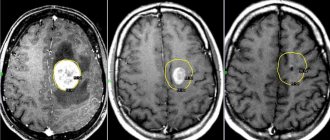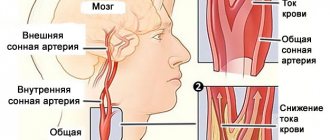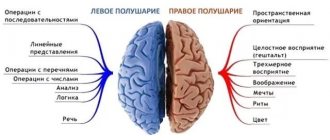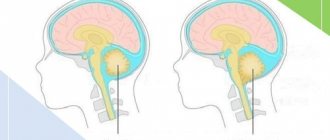The simplest single-celled organism, Naegleria Fowler, usually lives in fresh water bodies with warm water. During bathing, this parasite can enter the human body through the nasal cavity, then through the olfactory canal it enters the brain area. As a result, this organism causes such a rare but very dangerous pathology as amoebic meningoencephalitis.
During this pathological process, damage to nerve cells, necrosis of the meninges, as well as swelling and hyperthermia of the brain are observed. As a result, the formation of purulent exudate around the bulbs occurs. This disease usually has a poor prognosis, often accompanied by death. Each person exhibits different symptoms, their intensity and severity depends on the degree of damage to the nervous system. Therefore, it is imperative to know the main causes and symptoms of this disease so as not to become infected with this terrible pathology.
This is what amoebas look like
Features of the disease
The causative agent of this disease is the amoeba naegleria; this protozoan organism belongs to the group of eukaryotes or nuclear unicellular organisms of the flagellar type. This simple organism lives in stagnant waters of ponds, reservoirs, and pools with insufficiently chlorinated water. This type of organism lives mainly in soils with high humidity.
The causative agent of amoebic meningitis is a facultative protozoan, which means that the amoeba can live quietly in the environment, and if it enters the human body, it will further parasitize inside the human body.
An amoeba can live for a long time in a cyst, in a protective shell. This usually happens when unfavorable living conditions arise, for example, if a reservoir is drained. The microbe can live inside the cyst for several years, and it can easily tolerate temperatures up to 45 degrees. In this state, the body can endure wind over long distances; cysts with microbes are often found in air conditioner humidifiers, in chlorinated or unboiled drinking water. But it is worth noting that this organism becomes dangerous when it enters the flagellar stage.
If you drink water that contains the causative agents of amoebic meningitis, the microbes will simply be digested in the stomach. The main period during which the process of infection by the parasite occurs is considered to be summer time, the height of the swimming season. The pathogen can enter the body even if air is inhaled at this time.
This is how the amoeba gets into the brain
The amoeba moves into the brain area according to the following scheme:
- the pathogen enters the nasal cavity along with dirty water;
- further, it penetrates into the olfactory nerve;
- after this, the parasite penetrates the brain area, its membrane and all parts - the cerebellum, brain stem and the upper parts of the spinal cord.
Epidemiology
Almost all cases of this disease have been observed in North America, but sometimes in European countries. For example, in the Czech Republic, between 1962 and 1965, 16 people who swam in an outdoor pool fell ill. There have also been cases in England, New Zealand, Taiwan, Pakistan, India, etc. The fact is that if the reservoir in which the parasites live is drained, or becomes unsuitable for the life of naegleria, then it turns into a cyst that can be transferred with the wind to other bodies of water, including other countries. It cannot be transmitted from person to person in any way, so the disease is extremely rare even in America. Since the discovery of Naegleria, several hundred cases of the disease have been diagnosed.
Symptoms
Amebic meningoencephalitis can also occur in people with excellent health. Almost anyone, both adults and children, can become infected with this terrible pathology. The incubation period is from 2 to 10 days.
Typically, amoebic meningitis appears within 7 days after infection; during this period the following symptoms may be observed:
- Pain in the throat area.
- A dry cough may appear.
- Problems with smell.
- The appearance of vomiting, which does not bring relief.
- Migraine.
- There may be an increased degree of excitability.
- High body temperature.
These symptoms usually appear in other diseases, so this pathology can easily be overlooked or attributed to another disease. For this reason, examination of amoebic meningitis at the initial stage is quite difficult. Patients may think that this is a simple cold, for this reason they may not come to the doctor for a long time for diagnosis. After just 10 days, the following disorders of a neurological nature may be observed:
- increased tone of muscle fibers in the back of the head;
- the occurrence of seizures;
- problems with consciousness;
- manifestation of visual hallucinations;
- epileptic seizures;
- the occurrence of blindness;
- hearing problems, complete deafness may occur;
- coma state.
Amoeba in an approximate state
In the subsequent period, the causative agent of the disease, amoeba naegleria, begins to actively develop and multiply. In the course of its life, it quickly eats brain cells, for this reason, if treatment is not carried out in a timely manner, this can lead to death. It is worth noting that the mortality rate from this pathology is very high; patients cannot be saved in 90% of cases. The main reason for the increased mortality is that this disease is quite difficult to diagnose because the clinical signs are similar to those of bacterial meningitis. Often death occurs within 3–7 days after the first signs of this disease appear.
Forecast
The prognosis and consequences in both adults and children are most often the most unfavorable, even if appropriate treatment has been carried out. Death most often occurs in premature babies who have other developmental pathologies, and in older people. The most common complications are considered to be paresis, hearing impairment, increased intracranial pressure, decreased visual acuity, developmental delay, decreased intelligence, epileptic seizures, and coma.
Sometimes acute meningoencephalitis occurs without any consequences. After completing the course of treatment and complete rehabilitation, you should be observed by a neurologist for several years.
Prevention consists of treating any infections, using vaccinations against certain types of pathogens and avoiding contact with ticks.
Granulomatous form of amebic meningoencephalitis
What causes granulomatous type meningitis? The causative agent of this form is still the same - amoeba naegleria, but only the routes of infection occur through contact and airborne droplets. The parasite enters the human body through the pores of the skin and the mucous layer. This type of disease develops quite slowly, the first symptoms may appear several weeks or even several months after infection. This pathological process mainly affects people with a weakened immune system, as well as people with chronic diseases.
Amoebic meningitis in the granulomatous form has the following characteristic features:
- Weakness of the muscle fibers of one part of the body.
- Seizures of an epileptic nature.
- Disorder of consciousness.
- Changes in behavior may be noted.
- A large number of ulcers and nodes with a dense structure may appear on the surface of the skin.
- Increased tone of muscle fibers in the back of the head.
During this pathological process, hyperthermia and headaches do not occur. When performing CT and MRI, multiple lesions that resemble embolic infarctions may be noted on the image.
Brain damage determined by various hardware studies
Diagnostic features
Since this pathology is quite dangerous and the patient’s death can occur at almost any time, it is important to diagnose this disease immediately after the first symptoms appear.
Features of examination at the primary stage of amoebic meningitis:
- to identify primary amoebic meningoencephalitis, bacterioscopy of fluid in the spinal cord and bacteriological blood culture are performed;
- if the patient has this pathology, then an increased level of red blood cells, protein, leukocytes will be found in his cerebrospinal fluid, and a reduced concentration of glucose will also be noted;
- Microscopic diagnostics of the liquid is required to determine the presence of mobile microorganisms.
During amoebic meningitis, the greatest damage occurs to the gray matter of the brain. Necrosis of nerve tissue is also observed; a large number of vegetative forms of parasites may be present around the arteries.
The main affected areas may be the diencephalon region and its periphery, or the posterior cranial fossa, which is located in the brain stem area.
Additionally, a lumbar puncture is performed during diagnosis. Increased cerebrospinal fluid pressure is usually noted during this test. The fluid may have a hemorrhagic structure with pronounced neutrophilic pleocidosis.
When collecting information when taking an anamnesis, you must tell the doctor whether you have recently swum in bodies of water. If patients have immunodeficiency, the damage may affect the lung area and skin.
However, in most cases, an accurate diagnosis is usually established after the death of the patient.
Purulent meningoencephalitis: diagnosis
When a patient comes to the hospital with complaints about an existing disease, the diagnostic search begins with interviewing the patient and his relatives regarding a current or recently suffered infectious disease, identifying a history of TBI, the fact of vaccination, a tick bite, etc. Further diagnostic studies include the following:
- Neurological examination;
- Laboratory tests (CBC, OAM, blood biochemistry, bacteriological culture of blood and all body media for sterility, PCR);
- CT, MRI of the brain;
- Lumbar puncture. With purulent inflammation, the fluid is cloudy with a flaky sediment, with serous inflammation it is transparent, with hemorrhagic inflammation it contains elements of blood. In order to identify the pathogen, cerebrospinal fluid is examined under a microscope, cultured on various nutrient media, and PCR diagnostics;
- Stereotactic brain biopsy. This procedure is performed in complex diagnostic cases. Allows you to diagnose meningoencephalitis of parasitic etiology and exclude a tumor process.
Treatment
Usually, rarely does anyone survive until treatment; many patients die within 5–7 days when infected. This is due to the fact that many people confuse this pathological process with other diseases and, because of this, go to the hospital late.
During the treatment of amoebic meningitis, antibiotic and antifungal agents are used. The most effective include:
- Metronidazole;
- Miconazole;
- Amphoterecin B;
- Rifampicin;
- Aminazine.
During the first period of treatment, drugs are administered intravenously in large dosages. Then they begin to be injected under the membranes of the brain, but the dosage of the drugs is reduced. During therapeutic therapy, anti-Negleria immune serum or monoclonal antibodies are often used.
It is worth considering that the disease develops rapidly, so the clock counts. The doctor should quickly carry out the necessary treatment using the above medications. It is under no circumstances recommended to treat it at home, only in a hospital under the supervision of a specialist.
You should not use various folk remedies to treat the disease, only special medications. If the patient still managed to survive after this pathology and was transferred to further outpatient treatment, then in these cases the following recommendations must be followed:
- Be sure to drink a lot and eat well.
- The room should always be in twilight.
- Taking vitamin complexes.
- Maintaining bed rest.
- Performing physiotherapeutic procedures.
Treatment and prevention
Most often, primary amoebic meningoencephalitis leads to the death of the infected person, but a boy who was only 5 months old was cured in Iran in 2012. Despite the fact that drugs exist, they do not always help in the fight against naegleria. Warm bodies of water, especially untreated ones, should be avoided. When swimming in such reservoirs, it is advisable to avoid getting water into your nose. It is also not recommended to come into contact with dirt.
The following are used for therapy[1]: Metronidazole, amphotericin B, rifampicin, fluconazole, miltefosine. Recent studies have shown the high effectiveness of digoxin and procyclidine[2], as well as aminazine[3] in the fight against Naegleria fowleri
.
Preventive measures
This pathology is considered dangerous and very scary, so you should protect yourself in advance from contracting this disease. In this case, it is worth remembering several important recommendations that will help avoid infection with amoebic meningoencephalitis:
- you should refrain from swimming in warm, stagnant bodies of water, especially with dirty water, which are not subject to sanitary control;
- It is better to protect your nose while diving - to do this, you can hold it with your hands or put a special clothespin on it;
- if you have to work in the garden or in a vegetable garden with wet soil, then you need to wear a mask and gloves on your hands;
- after working with wet soil, be sure to clean your hands and rinse them well; you also need to clean out all the dirt from under your nails;
- monitor children’s hygiene, do not allow them to pick their noses with dirty fingers;
- It is worth considering that amoeba cysts have increased vitality, so it is necessary to periodically clean air conditioner humidifiers;
- You should only drink boiled water.
Nose clips
Infection with amoebic meningoencephalitis can affect absolutely anyone. For this reason, it is important to follow preventive recommendations. These rules will help not only prevent infection, but also protect against unpleasant consequences that may arise from this pathology. Even if a person manages to be cured, he may still remain disabled for life. To prevent this from happening, you should carefully monitor where you swim in the summer, be sure to use protective equipment when working with the soil, as well as perform regular house cleaning and air conditioning cleaning.








